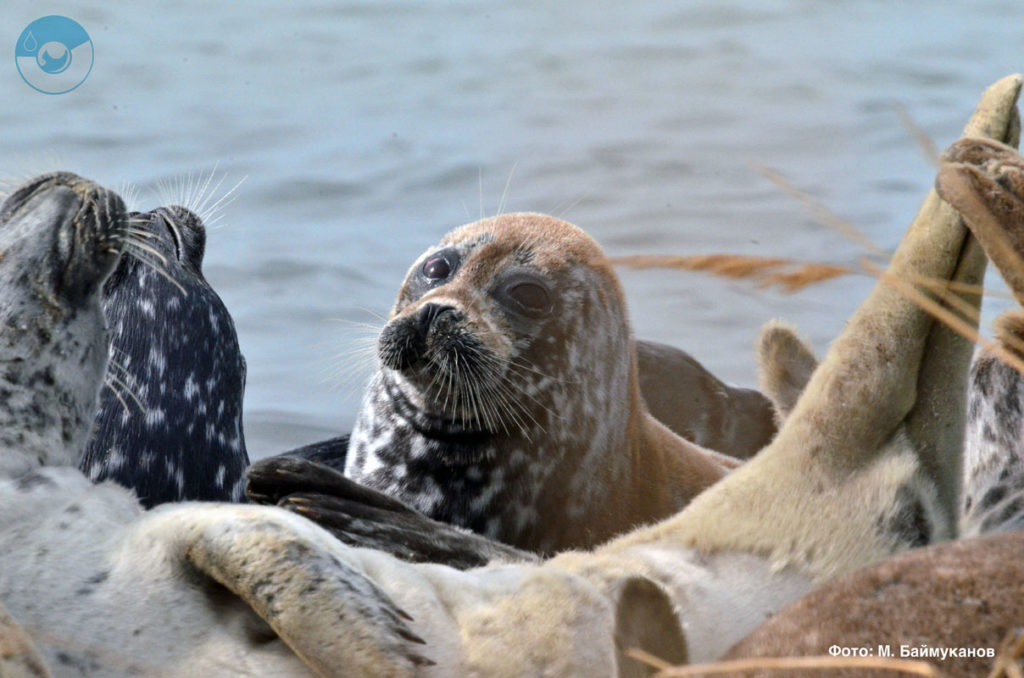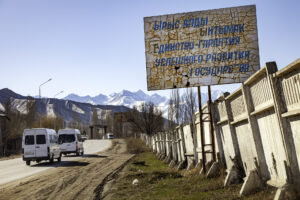Hundreds of dead seals were discovered in Turkmenistan, with the cause of their death unclear. Government officials seem to want to conceal the mass deaths of the Caspian seal, which is listed as an endangered species.This article was originally published on Novastan’s German website on 17 March 2021. The Caspian Sea has been the site of an ecological tragedy, the cause of which is not yet known. Radio Azatlyk, the Turkmen service of Radio Free Europe, reported that on 4 February, hundreds of seal corpses and thousands of dead fish were found along the Turkmen coast. The Caspian seal is classified as an endangered species by the International Union for the Conservation of Nature (IUCN). According to an eyewitness account last December, the corpses washed ashore on a stretch of coast near the harbour city of Türkmenbaşy. “Members of the naval forces recovered many dead seals in January. There were hundreds. In addition, there are many dead fish and birds on the coast […] our superiors require us to stay silent. Scientists from Ashgabat are trying to find out the seals’ cause of death, whether it might be a virus or waste dumped by local factories,” a Turkmen border guard interviewed by Radio Azatlyk explained.
The journalists of Radio Azatlyk were not able to obtain a comment from the Turkmen Ministry of Agriculture and Environmental Protection. However, there are indications that the cause of death was natural. At about the same time, numerous dead seals were discovered on the opposite coast of the Caspian Sea.
Parallels with Dagestan
The Moscow Times reported on 12 December 2020 that hundreds of seal carcasses were washed onto land in the Russian Republic of Dagestan in the days preceding the announcement. The Russian authorities started investigations, but had not been able to determine the cause until now. Initial investigations indicated that the seals may have died of natural causes. “The condition of the seals’ inner organs does not corroborate the hypothesis of poisoning by heavy metals or pesticides,” said biologist Vyacheslav Bisikov, who was involved in the investigations, according to the Russian news agency Interfax. The scientists were also able to rule out the possibility that the seals were collateral damage of fishing activities. On 26 January, the Russian news agency TASS reported that one of the possible causes of death could be the release of natural gas, according to Scientists from the Institute of Ecology and Evolution of the Russian Academy of Sciences. “Similar changes in the tissues of internal organs were found in all the pathologically examined seals. […] These changes may develop as a result of hypoxia and they indicate death by asphyxiation,” TASS quotes from a statement by the scientists. The researchers name the release of gases from seismic tremors or mud volcanoes at the bottom of the Caspian Sea as the most likely cause. The researchers furthermore succeeded in establishing that the seals died one to six weeks before they were discovered, meaning that they had died in November. Considering the prevailing winds and the surface currents, it is assumed that the animals died out in open water. Furthermore, 40 seismic tremors were registered in November alone. “Under calm wind conditions, local methane emissions above the sea surface can form gaseous air bubbles, which are unsuitable for respiration. This could very likely have led to the mass deaths of the Caspian seals, which were migrating north along the coast of Dagestan to their breeding grounds at the time,” the scientists conclude.
An endangered species
The Caspian seal is the only mammal in the Caspian Sea. The IUCN granted it the status of an endangered species in 2008. Since 2020 the seal is registered in Russia’s Red Book. The number of seals, whose colonies are spread out over Kazakhstan, Turkmenistan and Russia, is contested. “The last aerial count – a type of population census – was conducted in 2005. About 10,000 animals were registered at the time,” the Kazakh biologist Assel Baimukanova explained in September 2018. According to Interfax, Vyacheslav Bisikov assumes that “the populations of Caspian seals […] encompass 270,000 to 300,000 individuals”. On the Russian channel TV Rain, zoologist Ilya Gomiranov estimates that the population has decreased from a million to between 40,000-60,000 seals. According to Assel Baimukanova, the reasons for the population reduction are varied, including the decrease of ice cover due to global warming, and the pollution of the Caspian Sea with toxins and illegal fishing. Mass deaths of seals occur time and again. In 2000, for instance, more than 10,000 Caspian Seals died of a viral infection. Read more on Novastan:Troubled waters: Turkmenistan’s environmental policy As Interfax reports, hundreds of dead seals washed ashore on the Dagestani coast in 2012 and 2016 after severe autumn storms. The precise cause of death could not be established, Russian fishing authorities said. Last October, mass animal deaths occurred not far from the Kamchatka peninsula in eastern Russia. According to official reports, the causes were natural. The investigations in Dagestan suggest that the animals which washed ashore in Turkmenistan died of the same causes. Nevertheless, the Turkmen authorities would do well to investigate the cause of death of the endangered animals instead of covering it up.
Written by Robin Roth
Translated from German by Nora Neinonen
Edited by Mari Paine
For more news and analysis from Central Asia, follow us on Twitter, Facebook, Telegram, Linkedin or Instagram.
 Hundreds of lifeless Caspian seals washed ashore in Turkmenistan
Hundreds of lifeless Caspian seals washed ashore in Turkmenistan 



